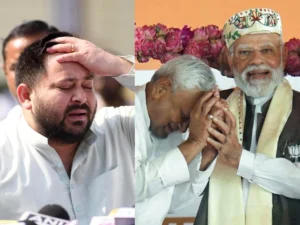Your country India faced another tough year when it comes to women’s rights. The World Economic Forum just released its Global Gender Gap Index 2025, showing India dropping from 129th place to 131st position out of 146 countries measured worldwide.
This means India ranks lower than most other nations when measuring how women get treated compared to men. The report looks at areas like jobs, education, health, and political power to see which countries treat women fairly.
India slips to 131st position: What Makes These Rankings Matter
The Global Gender Gap Index measures four main areas where women might face problems. These include economic opportunities, educational achievement, health outcomes, and political empowerment for women across different nations.
Economic opportunities cover things like:
- Equal wages between women plus men
- Leadership roles in companies
- Professional technical workers
Educational achievement looks at basic literacy rates, enrollment in primary and secondary schools, and university-level education access for both genders.
Health outcomes examine women’s basic health rights, including maternal mortality rates, and life expectancy differences between males plus females.
Political empowerment tracks women serving in government positions, ministerial roles, and years with female heads of state during the past fifty years.
Where India Struggles Most
Your nation shows mixed results across these different areas being measured. While India performs better in some categories, major challenges remain in others that bring down the overall score significantly.
Women’s participation in the workforce remains quite low compared to men in India. Many women still face barriers when trying to get equal-paying jobs or leadership positions within companies.
The report shows that Indian women often lack access to the same career opportunities that men typically receive. Cultural expectations sometimes limit women’s ability to work outside their homes or pursue certain professions.
Political representation presents another challenge to India’s gender equality efforts. Women hold fewer positions in government leadership roles compared to many other countries around the world.
India slips to 131st position: Small Steps Forward Still Happening
Despite these challenges, some positive changes continue happening across India. More girls now attend school than in previous generations, showing progress in educational access for females.
Healthcare improvements have also been noted in recent years. Better medical services for women, including maternal health programs, help improve overall outcomes for Indian women.
Some states within India perform much better than others when it comes to gender equality measures. These regional differences show that progress remains possible when local communities support women’s rights.
How Other Countries Compare
Nordic countries like Iceland, Norway, and Sweden continue leading the global rankings year after year. These nations show that achieving gender equality benefits entire societies, not just women themselves.
Countries in South Asia generally struggle with similar issues that India faces. However, some neighbouring nations have made faster progress in recent years through targeted policy changes.
The gap between top-performing countries plus lower-ranked nations like India continues to grow wider each year. This suggests that countries need to work harder to catch up with global leaders.
India slips to 131st position: What This Means Going Forward
India’s ranking drop sends a clear signal that more work needs to happen. Government policies, business practices, and social attitudes all need to change if India wants to improve its position.
Young people in India often show more support for gender equality than older generations. This gives hope that future changes might happen faster as these younger Indians gain more influence.
Education plays a huge role in changing attitudes about women’s roles in society. When more people understand why gender equality matters, positive changes become more likely to occur.
Action Steps That Could Help
Several specific changes could help India improve its gender gap ranking in the coming years:
- Creating more job opportunities specifically designed for women
- Passing laws that guarantee equal wages for equal work
- Encouraging more women to run for political office
Better childcare support would allow more mothers to work outside their homes. Many women want to have careers but cannot find affordable, safe childcare options for their children.
Companies could also help by creating more flexible work arrangements. When businesses offer remote work options or flexible schedules, more women can balance career goals with family responsibilities.
The path forward requires effort from everyone in Indian society. Government officials, business leaders, families, and individuals all need to support changes that give women equal opportunities to succeed.








Be First to Comment